
The Wonderful Wizard of Oz is a 1900 children's novel written by author L. Frank Baum and illustrated by W. W. Denslow. It is the first novel in the Oz series of books. A Kansas farm girl named Dorothy ends up in the magical Land of Oz after she and her pet dog Toto are swept away from their home by a cyclone. Upon her arrival in the magical world of Oz, she learns she cannot return home until she has destroyed the Wicked Witch of the West.

Dorothy Gale is a fictional character created by American author L. Frank Baum as the protagonist in many of his Oz novels. She first appears in Baum's classic 1900 children's novel The Wonderful Wizard of Oz and reappears in most of its sequels. In addition, she is the main character in various adaptations, notably the 1939 film adaptation of the novel, The Wizard of Oz.

Princess Ozma is a fictional character from the Land of Oz, created by American author L. Frank Baum. She appears for the first time in the second Oz book, The Marvelous Land of Oz (1904), and in every Oz book thereafter.

Glinda is a fictional character created by L. Frank Baum for his Oz novels. She first appears in Baum's 1900 children's classic The Wonderful Wizard of Oz, and is the most powerful sorceress in the Land of Oz, ruler of the Quadling Country South of the Emerald City, and protector of Princess Ozma.

A Munchkin is a native of the fictional Munchkin Country in the Oz books by American author L. Frank Baum. They first appear in the classic children's novel The Wonderful Wizard of Oz (1900) where they welcome Dorothy Gale to their city in Oz. The Munchkins are described as being the same height as Dorothy and they wear only shades of blue clothing, as blue is the Munchkins' favorite color. Blue is also the predominating color that officially represents the eastern quadrant in the Land of Oz. The Munchkins have appeared in various media, including the 1939 film The Wizard of Oz, as well as in various other films and comedy acts.

The Land of Oz is a magical country introduced in the 1900 children's novel The Wonderful Wizard of Oz written by L. Frank Baum and illustrated by W. W. Denslow.

Alexander Melentyevich Volkov was a Soviet novelist, playwright, university lecturer. He was an author of novels, short stories, plays and poems for children, mostly remembered for the Magic Land series of books, based on L. Frank Baum's The Wonderful Wizard of Oz.
The Wicked Witch of the West is a fictional character who appears in the classic children's novel The Wonderful Wizard of Oz (1900), created by American author L. Frank Baum. In Baum's subsequent Oz novels, it is the Nome King who is the principal villain; the Wicked Witch of the West is rarely even referred to again after her death in the first book.

The Wicked Witch of the East is a fictional character created by American author L. Frank Baum. She is a crucial character but appears only briefly in Baum's classic children's series of Oz novels, most notably The Wonderful Wizard of Oz (1900).
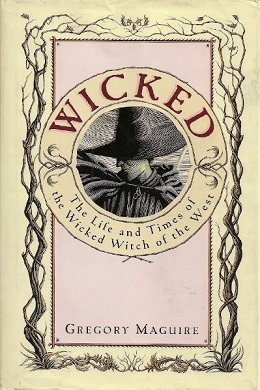
Wicked: The Life and Times of the Wicked Witch of the West is an American novel published in 1995, written by Gregory Maguire with illustrations by Douglas Smith. It is the first in The Wicked Years series, and was followed by Son of a Witch, A Lion Among Men, and Out of Oz. In 2003, it was adapted as the Tony Award-winning Broadway musical Wicked. The musical is in the process of being adapted into a two-part feature film, with the first film scheduled to be released in November 2024 and the second film in November 2025.

The Good Witch of the North, sometimes named Locasta or Tattypoo, is a fictional character in the Land of Oz, created by American author L. Frank Baum. She is the elderly and mild-mannered Ruler of the Gillikin Country. Her only significant appearance in Baum's work is in Chapter 2 of The Wonderful Wizard of Oz (1900), in which she introduces Dorothy Gale to Oz and sends her to meet the Wizard, after placing a protective kiss on her forehead. She makes a brief cameo appearance at Princess Ozma's birthday party in The Road to Oz (1909), but is otherwise only mentioned elsewhere in the series.
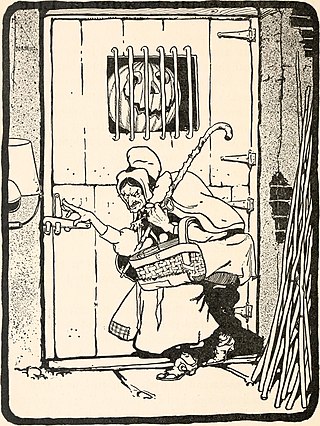
Mombi is a fictional character in L. Frank Baum's classic children's series of Oz Books. She is the most significant antagonist in the second Oz book The Marvelous Land of Oz (1904), and is alluded to in other works. Mombi plays a very important role in the fictional history of Oz.
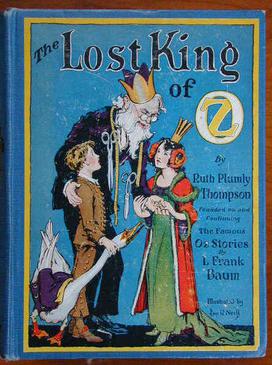
King Pastoria is a fictional character mentioned in the Oz books by American author L. Frank Baum. He was the rightful ruler and King of the undiscovered Land of Oz, but was mysteriously removed from his position when the Wizard of Oz unexpectedly came to the country and took the throne, proclaiming himself as the new dominant ruler of Oz. Shortly after, Pastoria's only child and heir, Princess Ozma, suddenly vanished, leaving not a single clue of her whereabouts.

The Wizard of Oz was a 1902 musical extravaganza based on the 1900 novel The Wonderful Wizard of Oz by L. Frank Baum. Although Baum is the credited bookwriter, Glen MacDonough was hired on as jokewriter after Baum had finished the script, and the book was largely ghostwritten by a man named Finnegan. Much of the original music was by Paul Tietjens and has been mostly lost, although it was still well-remembered and in discussion at MGM in 1939 when the classic film version of the story was made. The original show was particularly popular because of its two comedy stars: Fred Stone playing the Scarecrow, and David C. Montgomery as the Tin Woodman.
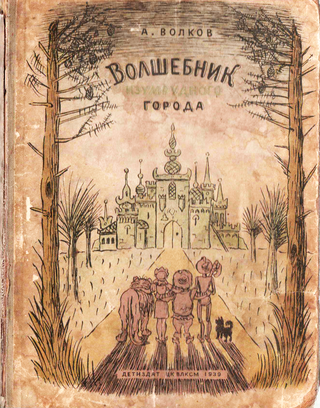
The Wizard of the Emerald City is a 1939 children's novel by Russian writer Alexander Melentyevich Volkov. The book is a re-narration of L. Frank Baum's The Wonderful Wizard of Oz. Baum's name is sometimes credited in the book. The names of most characters are changed, some elements of Baum's novel are removed, and some new elements are added.
The Wicked Years is a series of novels by Gregory Maguire that present a revisionist take on L. Frank Baum's The Wonderful Wizard of Oz, its 1939 film adaptation, and related books.

Oz the Great and Powerful is a 2013 American fantasy adventure film directed by Sam Raimi and written by David Lindsay-Abaire and Mitchell Kapner from a story by Kapner. Based on L. Frank Baum's early 20th century Oz books and set 20 years before the events of the original 1900 novel, the film is a spiritual prequel to the 1939 MGM film, The Wizard of Oz. Starring James Franco in the title role, Mila Kunis, Rachel Weisz, Michelle Williams, Zach Braff, Bill Cobbs, Joey King, William Bock, and Tony Cox, the film tells the story of Oscar Diggs, a deceptive magician who arrives in the Land of Oz and encounters three witches: Theodora, Evanora, and Glinda. Oscar is then enlisted to restore order in Oz while struggling to resolve conflicts with the witches and himself.
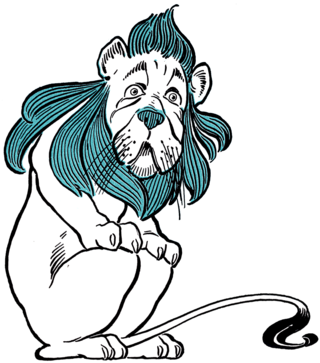
The Cowardly Lion is a character in the fictional Land of Oz created by American author L. Frank Baum. He is depicted as an African lion, but like all animals in Oz, he can speak.















